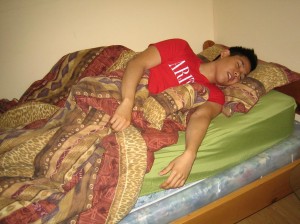Overview
Chickenpox is an illness most commonly seen in children that that particular age group catches at some point in their lifetime. It can cause a case of red, itchy areas that eventually turn into blisters filled with fluid. These blisters then form A crust and turn into scabs, which will eventually drop off on their own. Some children who suffer from chickenpox only end up developing a few spots; however, others end up getting spots all over their entire body. Oftentimes, they appear on the following areas:
*Face

*Scalp
*Ears
*Underarms
*Stomach
*Chest
*Arms
*Legs
What Should You Do?
In order to keep the infection from spreading, your children should be kept out of school until their chickenpox has completely crusted over. Typically, this illness is infectious approximately one to two days before the rash itself starts, as well as five to six days after the rash starts, which is when the blisters begin to crust over. Furthermore, your child should be kept away from all other public areas in order to avoid contact with those who may not have had the illness. This includes those who are more at risk of serious issues, such as newborn babies and pregnant women.
Treatment
In terms of children, chickenpox is considered to be a mild illness; however, your child will likely feel miserable while they are suffering from it. During the first few days of the illness, your child will likely have a fever and will also be itchy from the spots that they have. With that being said, there is no specific treatment for chickenpox itself; however, there are remedies available from many pharmacies that can help to alleviate the many symptoms that come with it, including paracetamol to help relieve the fever and calamine lotion to help reduce itching.
When Should a Doctor Be Seen?
In many children, chickenpox is a more mild illness that goes away on its own; however, there are some children that can become a great deal more ill and will have to be seen by a doctor. If your child begins exhibiting the following symptoms, contact a doctor right away:
*Infected blisters
*Chest pains
*Difficulty breathing
Chickenpox in Adults
While chickenpox is typically seen as a childhood illness, adults can actually contract it as well. In fact, this illness is one that can be much more severe in adults, and they can also develop more serious complications.
Until all spots have crusted over, adults with chickenpox should avoid going to work. Furthermore, they should also obtain advice from a medical professional if they find they have any abnormal symptoms, which can include infected blisters. Additionally, adults may also benefit from taking anti-viral medication as long as they start taking it early enough.
Who is at More of a Special Risk?
The following groups of people are at more of a special risk of developing chickenpox:
*Women who are pregnant
*Newborn babies
*Those who have weak immune systems